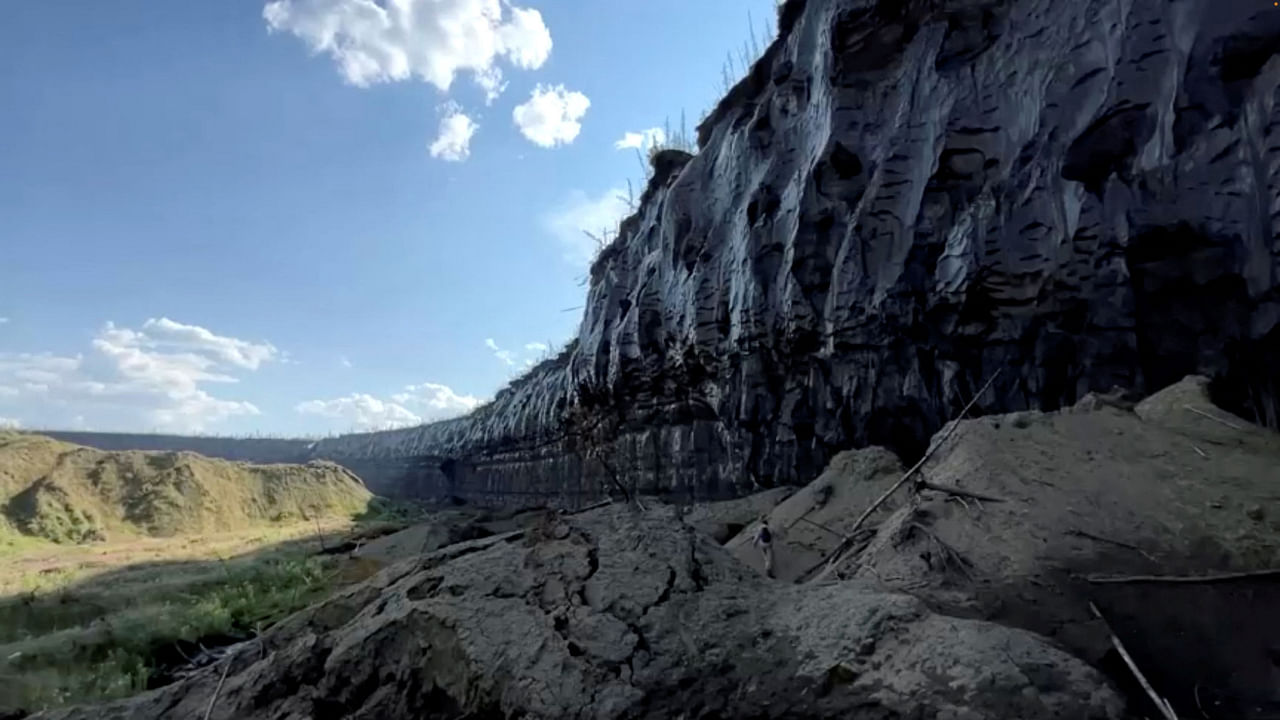
For Scientific American by Meghan Bartels
At first glance, nematodes are unassuming roundworms—but don’t underestimate them.
In 2018, scientists announced they had discovered and revived two types of microscopic nematodes found in the Siberian permafrost, estimating they may have been 42,000 years old. Now these roundworms are the subject of more research, which posits that one of these nematode varieties represents a new species, dubbed Panagrolaimus kolymaensis for the Kolyma River where they were found. The new research, published on July 27 in the journal PLOS Genetics, also compares the Siberian worm’s survival mechanism with one found in another nematode species, Caenorhabditis elegans—a model organism used in laboratories around the world. The researchers further claim that the P. kolymaensis worms are actually 46,000 years old, based on their dating of plant matter found with these nematodes.
“The radiocarbon dating is absolutely precise, and we now know that they really survived 46,000 years,” says study co-author Teymuras Kurzchalia, a cell biologist emeritus at the Max Planck Institute of Molecular Cell Biology and Genetics in Dresden.
Panagrolaimus species are found around the world and are known for surviving in environments that regularly expose them to desiccation or freezing, says Ann Burnell, an emeritus professor of biology at Maynooth University in Ireland, who was not involved in the new study.
Also Read | Himalayan study springs ocean water surprise
If the worms really are as old as the study suggests, they would be by far the most stunning examples of what scientists call cryptobiosis—an organism’s ability to suspend its own metabolism in poor conditions.
“I thought it was an impressive and interesting piece of work,” says David Wharton, an emeritus professor of zoology at New Zealand’s University of Otago, who was not involved in the new research.
But some scientists are skeptical of the study’s findings, which was also the case when the specimens were first reported in 2018. At that time outside researchers expressed concerns that the analyzed nematodes might be modern contamination. Byron Adams, a biologist at Brigham Young University, was one of those skeptics and remains unconvinced by Kurzchalia and his colleagues’ new work. “I would love to believe that the animals they are describing have survived being frozen for 40,000 years in permafrost,” Adams says. “And if I were a betting man, I would bet that it could actually happen, and these things really are this old.”
But Adams contends that the analysis in the paper doesn’t prove the worms’ age—only that of the plant material found nearby. “I don’t doubt the age of the organic material in the permafrost,” he says. “Those values are likely legit.”
Adams adds, however, that “the authors haven’t done the work to show that the animals they have recovered are not simply surface contaminants.” One way to verify the ages, he says, would be to sample soil in the area and confirm that nematodes in it represent different species from those found living in the permafrost.
Kurzchalia wasn’t involved in the original collection process, which was conducted in 2002 as part of a year-long series of excursions. But he says he trusts the sterility procedures the scientists used to avoid modern contamination. Kurzchalia first encountered the worms much later, after he reached out to express interest in initial reports of these “resurrected” nematodes and invited a Russian co-author to bring some specimens to his laboratory for analysis.
In addition to the radiocarbon dating, the authors of the new study also confirmed that they could successfully induce the nematodes to enter and exit the dormancylike state of cryptobiosis using special preparatory cues.
Wharton says, however, that the freezing mechanism the researchers tested is not realistic because it involved drying the nematodes out before abruptly freezing them. It’s more likely that in nature, temperatures gradually fell while water remained present, he adds. “This is hardly a natural situation,” Wharton says. “Since the nematodes need water to be active and to reproduce, it seems more likely they have been frozen in contact with water.”
The new paper also includes genetic analyses, which Kurzchalia says are challenging in this case because P. kolymaensis is parthenogenic, meaning females of the species can reproduce without a male partner (although typically less profusely). (In addition, the nematodes are triploid, containing three copies of each chromosome; typically, chromosomes come in pairs, with half contributed by each parent.) Kurzchalia says one type of genetic analysis used by the team requires some 2,000 to 4,000 worms. That number is trivial for the common lab species C. elegans but difficult to achieve when working with P. kolymaensis.
The struggle to raise enough worms was worth it, according to Adams, who calls the genetic analyses “solid and interesting, regardless of the questions about the age of the recovered animals.”
During the analyses, the researchers also looked for genes that the common C. elegans is known to use when a particular form of that worm, called the dauer larva, goes into the dormancy of cryptobiosis. Kurzchalia’s lab had previously shown that these dauer larvae need to process a sugar called trehalose in order to survive being frozen. In the new study, the genes required for that process appeared to be present in the P. kolymaensis as well, the team found.
“This survival kit is the same as it was 46,000 years ago,” Kurzchalia says.